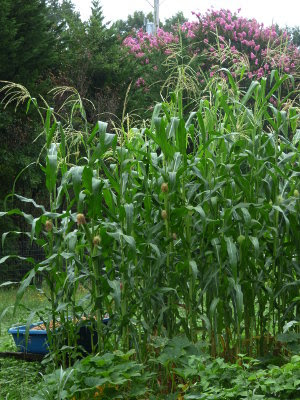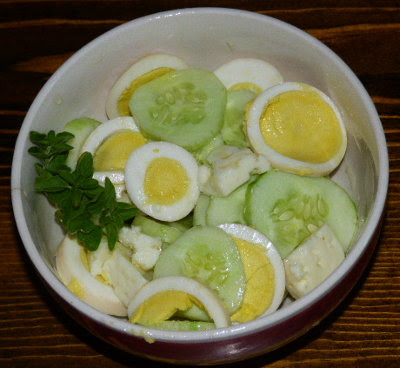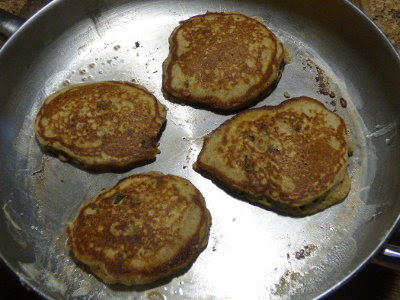In my "
Goat Barns: Delays and Discoveries" blog post, I showed you how Dan dealt with a massive amount of rain runoff that was finding it's way into the soon-to-be-completed goat barn. Subsequent rainfall proved its effectiveness, but Dan wasn't satisfied with this:
This is the drain pipe in back of the barn. It's protected by an overhang which will serve as the goats' loafing area. However, Dan wasn't sure the pipe was buried deep enough, considering that goats and us will be constantly walking over it. Probably wouldn't be a problem, but neither were we looking for a future "why didn't I ...?" moment.
So he dug it up and buried it deeper. Satisfied with that, he wanted to build up the ground on top of the pipe and gently slope it away from the barn. But with what? Folks used to give away fill dirt for free, but apparently not anymore. We really didn't want to buy dirt, so we brainstormed: Gravel? Sand? Concrete? We really didn't want to buy those either.
"How about clay?" I suggested, because our subsoil is southern red clay.
"But from where?" he asked.We'd have to dig at least 6 inches to get it.
"I've got just the place," I said, because I've been wanted to build more hugelkultur swales in the garden.
So far I've dug three swales in the garden.
One at the top of the garden, and
two that became beds. Plantings in those two beds have really done well during our dry spells and require less watering. My goal is to convert the entire garden to permanent raised hugelkultur swale beds.
Our brown sandy loam topsoil doesn't hold water, but our red clay subsoil does. With our garden is on a gentle slope, rain runs right through the topsoil, hits the clay, and drains out down
the hill. By digging swales into the clay and filling them with organic
matter, I can capture and retain some of that rainwater.
When I dig the swales I save the topsoil to mix with compost, but I don't need all that clay. When Dan needed filler for the drainage pipe I thought the clay would be a good option. I had just the spot picked out.
 |
Brown topsoil is about a shovel's spade deep, so I dug another
shovel depth into the clay to collect and hold rain runoff. |
|
|
That's the earthworks part, the next step is the hugelkultur part. The bottom of the swale, the part dug in the clay, is filled with anything that will hold moisture and decompose slowly: logs, large branches, wood chips, corn cobs and stalks, and wood scraps from barn building.
We
mill our own lumber so it isn't treated, and I feel comfortable adding it to the soil. The pile had been sitting there so long that the wood scraps on the bottom looked like this -
 |
| Mycorrhizal Fungi |
Mycorrhizal fungi had already grown on the wood scraps and were making new soil. I hope it transplants well in my bed!
I used soil to fill in the cracks and crevices until the clay layer of the bed was filled.
 |
| The tufts of green alongside the bed are wiregrass aka Bermuda. |
The top layer is topsoil mixed with compost and mulched with leaves.
 |
| Those are sweet potatoes in the bed on the right, melons on the left. |
The next step will be to build a border around the bed. Over time we'll build the soil up with more mulch and compost.
And Dan's project? The clay was perfect for the task.
 |
| When it's damp, our red clay is easy to form and shape. |
 |
| Packed down it will dry hard and solve several problems. |
The clay worked perfectly, and I have to say it's a good feeling to use our own resources. Best of all, we got two important jobs done.
























































